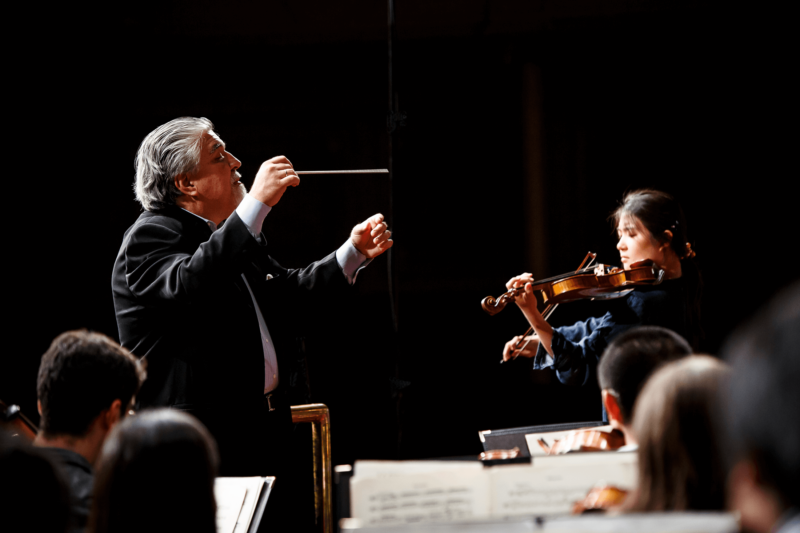
Don’t know the gent who’s behind the baton for our “Gitcha Groove On!” performances on Sept. 26-27?
Let’s fix that rather quickly, shall we?
Yes, you can read all about Andrés Cárdenes‘ musical adventures on his website. You’ll realize he’s quite the accomplished musician, leading notable ensembles such as the Munich Radio Orchestra, Dallas Symphony, Detroit Symphony, Colorado Symphony, St. Petersburg (Russia) Chamber Orchestra, San Diego Symphony, New West Symphony, Fundacíon Beethoven Philharmonic (Santiago, Chile), OFUNAM Orchestra of Mexico City, Sinfonica de Venezuela, National Repertory Orchestra and on and on.
But what makes him special and quite suitable for our chamber orchestra is that he understands what’s important to us: Connecting genuinely with audiences, championing new music and understanding that music is a dialog full of give and take.
Q: Everyone has a different way of describing the role of conductor. What’s your definition?
A: A conductor should be a born leader with a vision of what the music should communicate and must be able to convince and inspire the orchestra to “buy into” his interpretation. It requires great people management skills, a subtle understanding of the “karma” of each orchestra and their general vibe.
And as the centerpiece “beacon” of an organization, it is the conductor’s mandate to represent the orchestra publicly, honorably and artistically. Most importantly, a conductor must inspire the musicians to play their hearts out for him/her.
Q: Do you always lead or do you allow the musicians to influence your artistry?
A: In order for musicians to play their best, a conductor must know when to simply let them play and when to help guide them. Principal players are hired for a reason — they are the top players of their instruments. I always allow them to play their solos with very little input. They are the identities of the orchestra.
The tutti and corps players are essential to the overall discipline, energy and color of the orchestra. Whenever I conduct a great orchestra, it is immediately apparent they are looking for interesting ideas and techniques from a conductor. It is very inspiring to conduct them simply because it becomes a collaboration of their traditions and my ideas. Most orchestras carry a great sense of pride and tradition within their ranks.
Q: In performance, do things usually go as planned like in rehearsals or do you leave things up to the whim of the moment?
A: If things went exactly as planned, it wouldn’t be a live performance!
Every concert is like a painting that is painted over. It is always a one time event, so the exciting part is the unpredictability of a performance. This is why we all get a little nervous! Artistically and interpretatively, I often change things up to keep things fresh, especially if we are repeating the concert 3-4 times.
Q: Baton or no baton? Why?
A: The baton was invented by a violinist in the 19th century, Louis Spohr, so by default, being a violinist, I use one!
I have gone through periods where I didn’t use a baton and then went back. Using only your hands to express the music is a very noble vehicle, but rhythm and clarity with a baton seems to make orchestras feel more secure. I use my left hand much more to express dynamics and color, and the baton hand to influence strength and rhythm. I’ve played with conductors that don’t use a baton and I find they are usually more lax on the rhythmic side.
Q: How do you approach a piece you’ve never conducted or heard before? Like the world premiere on the program?
I definitely talk to the composer and get a real sense of the piece and how it morphed into this final product. Getting to understand the musical language of a composer is the goal of any conductor.
Once it becomes accessible, I add my own nuances and ideas to the work, even at times suggesting rewrites of sections, different orchestrations and dynamics to make the piece successful. As a soloist and former concertmaster, I am pretty well versed in the pitfalls of premieres, so I try my best to make it a success story.
___
The River Oaks Chamber Orchestra presents “Gitcha Groove On!” on Sept. 26-27 at The Church of St. John the Divine and at Miller Outdoor Theatre.

Leave A Reply